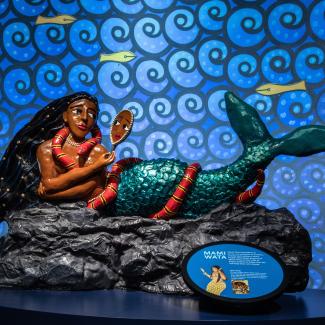
Giants, Dragons & Unicorns: The World of Mythic Creatures
-
Jump to...
About the Exhibition
About the Exhibition
Stories of mythical beings have been with us for thousands of years. These legends, which were sometimes inspired by fossils or living animals, continue to inspire us today. Giants, Dragons & Unicorns: The World of Mythic Creatures traces the natural and cultural roots of some of the world’s most enduring mythic creatures.
Organized by the American Museum of Natural History in New York, Giants, Dragons & Unicorns: The World of Mythic Creatures features unique cultural objects to highlight the surprising similarities and differences in the ways people around the world envision and depict mythic creatures. The exhibition includes models and cast fossils of prehistoric animals to investigate how they could have – through misidentification, speculation, fear, or imagination – inspired the development of several legendary creatures. For example, visitors will discover how narwhal tusks were believed to be magical remnants of unicorn horns, how dinosaur fossils may have been mistaken for the remains of griffins, and how tales of sea monsters may simply have been fisherman’s tales of real creatures such as the oarfish and giant squid.
Exhibition highlights include a stunning vibrant sculpture of the African water spirit Mami Wata; a replica “Feejee mermaid,” of the type made famous by showman P. T. Barnum, created by sewing the head and torso of a monkey to the tail of a fish; a “life-size” model of a European unicorn; and a dramatic model of a kraken, whose tentacles appear to rise out of the floor as if surfacing from the sea.
Giants, Dragons & Unicorns: The World of Mythic Creatures also offers numerous interactive stations throughout the exhibition. Visitors are invited to participate in activities like rearranging scale models of mammoth bones to look like a giant human skeleton. In an engaging digital interactive, visitors can build their own dragon and watch as it comes alive in a virtual environment. The exhibition also includes several video interviews with experts in various fields discussing the significance of mythical creatures and their possible real-life counterparts.
Access a Spanish audio translation of the exhibition text here.
Selected Works
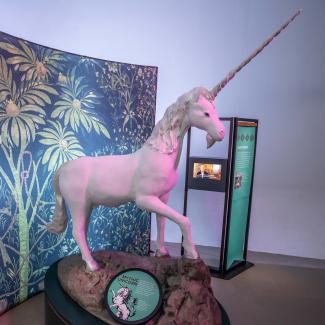
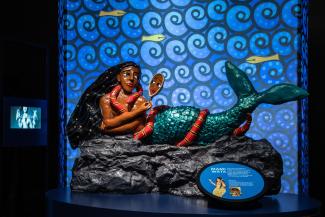
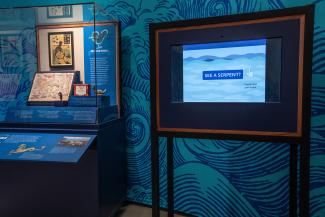
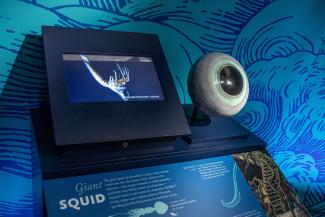
About the American Museum of Natural History (amnh.org)
The American Museum of Natural History, founded in 1869 with a dual mission of scientific research and science education, is one of the world’s preeminent scientific, educational, and cultural institutions. The Museum encompasses more than 40 permanent exhibition halls, galleries for temporary exhibitions, the Rose Center for Earth and Space including the Hayden Planetarium, and the Richard Gilder Center for Science, Education, and Innovation. The Museum’s scientists draw on a world-class permanent collection of more than 34 million specimens and artifacts, some of which are billions of years old, and on one of the largest natural history libraries in the world. Through its Richard Gilder Graduate School, the Museum offers two of the only free-standing, degree-granting programs of their kind at any museum in the U.S.: the Ph.D. program in Comparative Biology and the Master of Arts in Teaching (MAT) Earth Science residency program. Visit amnh.org for more information.